The United States faces a growing challenge with over 3 million emergency department visits annually due to patient falls, creating urgent demand for effective lifting solutions. This comprehensive guide examines all available options for assisting fallen patients who cannot get up independently, with particular focus on human-lifting assistance devices that enable multiple caregivers to safely lift patients using specialized handles and harnesses.
Human-Lifting Assistance Devices: The Foundation of Safe Patient Handling
Human-lifting assistance devices represent the most versatile and widely adopted solution for fallen patient recovery. These wearable devices with multiple handles allow teams of caregivers to distribute lifting forces safely while maintaining patient dignity and comfort.
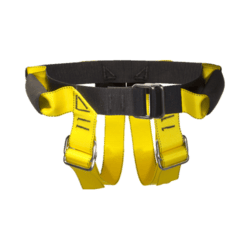
Doty Belt represents a practical innovation from retired California Fire Captain Glen Doty. This system underwent UL testing, with tensile strength verified to 1,700 pounds.
Targeted for firefighters, EMS personnel, caregivers, and caregivers, it reduces back injury risk while providing ease of use, affordability, and patient dignity.
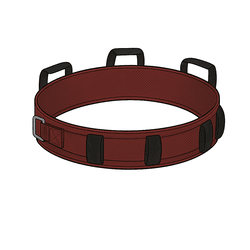
Gait belts form the cornerstone of manual patient assistance, evolved from simple cloth straps to sophisticated multi-handle systems designed for team lifting.
Critical specifications include widths from 1.5 to 6 inches (4-inch most common), lengths of 54 to 72 inches (adjustable), and 3-7 handle configurations with both vertical and horizontal orientations. Materials range from cotton webbing to heavy-duty canvas with metal or plastic buckles, all machine washable for infection control.
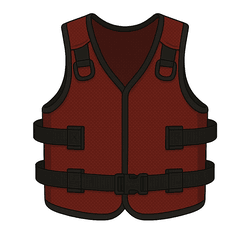
Lifting vests represent advanced evolution beyond basic belts, distributing lifting forces across the entire torso while providing numerous handle points for team access from multiple angles.
Team lifting capabilities distinguish vests from belts through multiple caregiver access points, reinforced stitching tested to professional standards, and quick-release buckles for emergency situations. Medical-grade materials enable easy decontamination between uses.

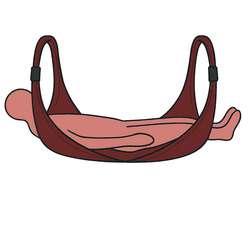
Specialized wrap-around devices offer flexible solutions for unique lifting challenges, particularly in confined spaces or emergency situations.
Patient lift slings include U-Slings, full-body slings with head support for maximum assistance, and toileting slings with open-bottom designs for hygiene maintenance. Materials span polyester, nylon, mesh, and net fabrics with weight capacities from 100-850 pounds through 2-point, 4-point, or 6-point hook systems.
Transfer tarps and soft stretchers offer foldable emergency lifting for confined space extractions.

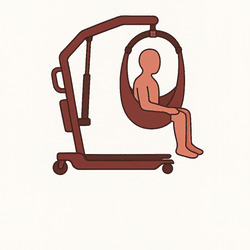
Floor lifts: Battery-powered and hydraulic systems
Floor lifts represent the most common mechanical solution, available in manual hydraulic and battery-powered electric configurations.
Pricing ranges from $730-$980 for manual models to $1,500-$3,500 for electric systems, with bariatric options reaching $5,000+. Medicare covers 80% of manual hydraulic lifts after deductible, though electric models require upgrade fees.
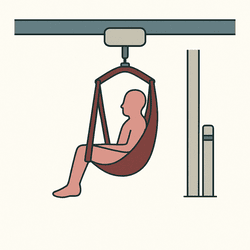
Ceiling lifts provide permanent infrastructure solutions with weight capacities from 450-1,000 pounds through straight, curved, or X-Y gantry track systems.
Installation costs range $5,000-$15,000+ including professional structural assessment, electrical work requiring licensed electricians, and minimum 8-foot ceiling height. Emergency manual lowering devices and anti-entrapment systems provide safety redundancy.

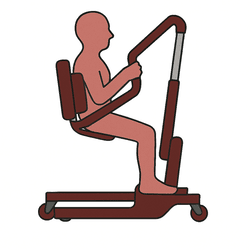
Stand-assist devices bridge the gap between manual assistance and full lifting, supporting sit-to-stand transfers with 300-800 pound capacities.
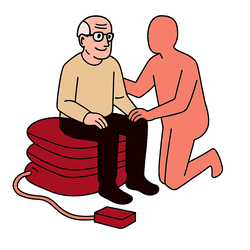
Air-powered lifting systems
Inflatable lifting cushions offer portable, lightweight solutions for emergency response and confined space access.
These devices can enable single-person operation while reducing caregiver injury risk by 95%. Temperature tolerance to 175°F supports high-temperature cleaning protocols.

Human-lifting assistance devices form the foundation of safe patient handling through innovative handle configurations, weight distribution systems, and team coordination capabilities. Mechanical and powered solutions provide higher capacity alternatives for challenging patient populations while inflatable systems offer portable emergency capabilities.
ROI calculations consistently demonstrate positive returns through injury prevention, productivity improvements, and staff retention benefits. Equipment selection should emphasize patient-specific needs, facility constraints, team capabilities, and long-term sustainability.
The evolution from basic gait belts to sophisticated multi-handle systems and powered mechanical solutions represents continuous innovation in patient safety and caregiver protection.
